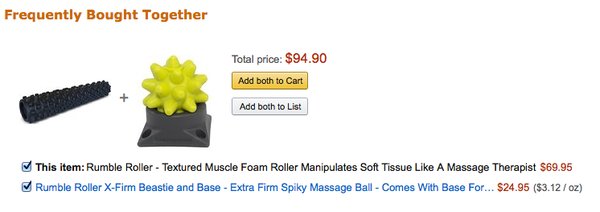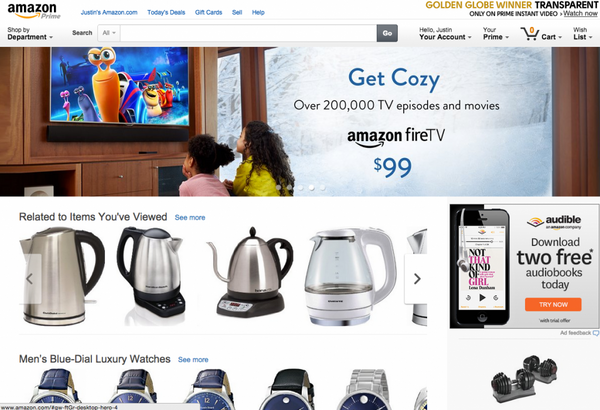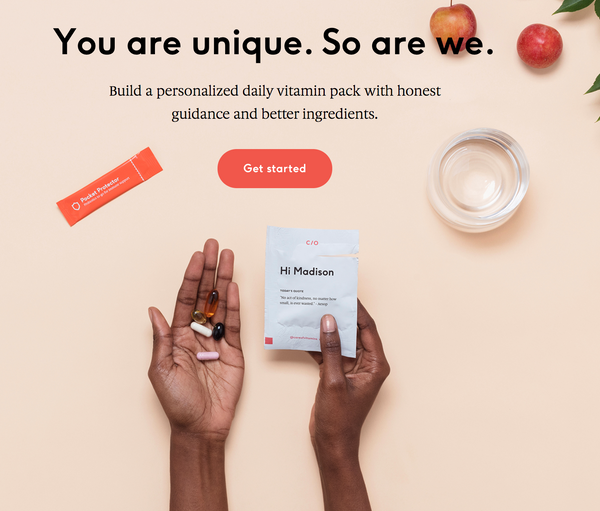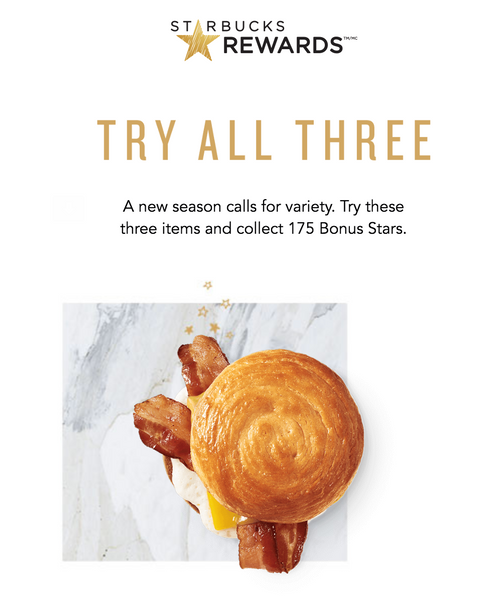Gone are the days when you could just segment your customers into one bucket and create generic marketing campaigns. Mass marketing techniques are out.
Instead, retail customers expect personalized communications and products tailored to their individual preferences. But personalization needs to go beyond basic tactics like addressing customers by their first name in emails. One 2017 study showed that only 22% of shoppers are satisfied with the current level of personalization from brands — meaning many brands aren’t inspiring customers to make a purchase through personalization.
To amp up their efforts, hyper-personalization is one way retailers are connecting with customers and are taking personalization to another level.
What is Hyper-Personalization?

Hyper-personalization combines behavioral and real-time data a brand can extract from its customers. For example: a shopper browses a website for cleaning supplies and simultaneously the website recommends similar products based on their specific search history.
This process is one that requires a brand to have a deep understanding of its own products and customers then devise a customized marketing strategy.
Brands also need to find the right technology and infrastructure to support those hyper-personalization techniques. This can include implementing multichannel options that store customer information across all your online and offline channels. This enables shoppers to have a seamless shopping experience, regardless of whether they’re shopping online or in-person.
Whichever approach you do take, implementing hyper-personalization techniques is the way of the future as more companies are opting out of traditional methods and into hyper-personalized ones.
Retailers Doing it Right
According to a Salesforce study, 51% of consumers expect that companies will anticipate their needs and make relevant suggestions before they even make contact — all by 2020.
As this field of one-to-one marketing continues to evolve, it becomes less product focused and more customer focused as more shoppers expected engagement based on their unique needs and interests. A report from Epsilon showed that 80% of shoppers are more likely to buy from a brand that offers a personalized experience.
As a result, businesses need to change their marketing techniques to keep up with the changing personalization landscape. Below is a list we’ve put together of some of our favorite brands that are doing hyper-personalization well.
Stitch Fix
 Stitch Fix is an online retailer that offers customers access to personal stylists who help them find clothing based on their sartorial tastes. The hand-selected pieces are shipped to their door and customers keep what they want and send back the rest. With the option to do this automatically or on demand, customers can buy what works best for their budget and their closet.
Stitch Fix is an online retailer that offers customers access to personal stylists who help them find clothing based on their sartorial tastes. The hand-selected pieces are shipped to their door and customers keep what they want and send back the rest. With the option to do this automatically or on demand, customers can buy what works best for their budget and their closet.
What makes this platform so enticing is the personalization process. Stitch Fix asks customers a series of questions to gauge their style and a stylist hand picks five items for the shopper. The items are sent to the customer’s home where they can try everything and only pay for the items they’d like to keep.
But here’s the key to Stitch Fix’s offering: Since customers don’t pay for any items except the ones they keep, stylists can use this information to better understand customer preferences and improve the recommendations over time. Stitch Fix stresses the importance of feedback, even for items that customers keep items, so that this data can continue to inform the company of what works and what doesn’t. All of this is done with low effort from the customer and they benefit from a completely personalized experience that’s simple and efficient.
So, by creating a business model that asks shoppers for their preferences and curates the right product for them, a brand can build a hyper-personalized experience over time — which builds customer loyalty.
Amazon
Amazon has years of experience when it comes to personalization, but with its massive inventory and different membership options, it has taken full advantage of the way shoppers interact with its website.
For example: A customer searches its database for a pair of headphones, and when they click on the product, the interface automatically recognizes the search and a “Frequently bought together” section will appear on the page.
 Amazon also creates a personalized homepage for each of its customers based on factors like their historical shopping habits, wishlist, and shopping cart. Anticipating the needs of its customer makes it easier to find what they’re looking for and discover new products.
Amazon also creates a personalized homepage for each of its customers based on factors like their historical shopping habits, wishlist, and shopping cart. Anticipating the needs of its customer makes it easier to find what they’re looking for and discover new products.
 To do this, Amazon uses predictive analytics to gather this data. The company uses both historical and real-time data to gain a deep understanding of its customers, thereby increasing customer satisfaction with hyper-personalized marketing techniques.
To do this, Amazon uses predictive analytics to gather this data. The company uses both historical and real-time data to gain a deep understanding of its customers, thereby increasing customer satisfaction with hyper-personalized marketing techniques.
Additionally, the ecommerce giant offers options like one-click checkout, where customers can quickly checkout with the touch of a button using stored customer payment and shipping information.
Amazon’s heavy investment in thoroughly understanding its customers and making the shopping process seamless and quick is what keeps many customers coming back. And for any retailer to truly understand and market to shoppers well, investing in data-gathering methods is key to customer acquisition and retention as well as personalization that resonates.
FURTHER READING: Learn how to leverage data from your point-of-sale system to make more sales.
Care/of
 Care/of understands the customer demand for personalization and created an entire brand aroudn the concept. Founded in 2016, Care/of sends customers a portable box of daily vitamin packs made with quality ingredients.
Care/of understands the customer demand for personalization and created an entire brand aroudn the concept. Founded in 2016, Care/of sends customers a portable box of daily vitamin packs made with quality ingredients.
Customers answer a series of questions about their lifestyle and goals and once completed, they’re provided with a personalized recommendation of daily vitamins and water-soluble supplements. Care/of offers in-depth information about the reasoning behind their recommendations, and customers can also change the quantity or the kind of vitamins and supplements they receive.
This level of personalization is compelling for customers because Care/of has taken a process that can be tedious and simplified it to fit customers’ needs. And with each customer interaction, the brand gains insights into how to improve its product and targeted marketing techniques.
This kind of subscription-based service is gaining popularity and gives brands access to user data as customers sign up. Then you can curate recommendations to fit the needs of prospective and current customers, and based on their interactions with your products, you can make tweaks and suggestions to better fit their needs.
FURTHER READING: Nail subscription-based shopping with these examples of retailers doing it well.
Starbucks
 Starbucks has long allowed customers to personalize its menu of products. But to take it one step further, Starbucks adopted a real-time personalization engine that produces individualized offers for their customers based on their previous behavior and preferences. The brand primarily pulls this data from their loyalty app, which it introduced back in 2011. The data helps the brand understand the needs and habits of each individual customer, and with this knowledge, Starbucks sends customers personalized emails with deals and updates relevant to them.
Starbucks has long allowed customers to personalize its menu of products. But to take it one step further, Starbucks adopted a real-time personalization engine that produces individualized offers for their customers based on their previous behavior and preferences. The brand primarily pulls this data from their loyalty app, which it introduced back in 2011. The data helps the brand understand the needs and habits of each individual customer, and with this knowledge, Starbucks sends customers personalized emails with deals and updates relevant to them.
People are willing to share their data via the app because they’re aware that continuous usage directly leads to tasty rewards for customers and more data for Starbucks. This kind of win-win situation is a direct result of the quality of its products and recognizing what its customers want.
So, creating a loyalty program is a fantastic way to not only reward your customers, but also to understand how they interact with your products then use this data to create hyper-personalized marketing campaigns to give customers more of what they want.
FURTHER READING: Learn how to create a retail loyalty program that resonates with your customers.
Moving Forward With Hyper-Personalization
Retail brands benefit from a deep understanding of customers and their shopping habits. And with more and more shoppers looking for retailers to anticipate their needs, this is the time to invest in technologies that allow you to access that information and use it to build products that meet your customers’ needs.
While we’ve all seen examples of personalization in retail, technology and creative techniques are enabling brands to take this tactic to the next level. As customers increasingly expect tailored experiences and highly curated product offerings, hyper-personalization is no longer a trend that smaller retailers can afford to ignore. But newer technologies and the emergence of Big Data have made it easier than ever to deliver products and an experience that keeps customers coming back for more.
Read more
- How to Get Started with Google Places for Business
- 14 Great Giveaway and Contest Ideas for Retailers in 2002
- 4 Retailers Who Are Killing it on Snapchat and What You Can Learn From Them
- The Ultimate Guide to Geotargeting in Retail
- The Art of the Drop: How Retailers Flash Sales Use Hype to Move Product (and Fast)
- 7 High-Impact Books Every Retailer Should Read [Giveaway
- Cause Marketing: What It Is, How To Do It, and Why It Matters
- The 8 Best Podcasts for On-the-Go Retail Entrepreneurs
- 5 Lessons Traditional Retailers Can Learn From DTC Brands
Hyper-personalization FAQ
Why is hyper Personalisation important?
What is the difference between personalization and hyper personalization?
How companies use hyper personalization?
- Targeted Ads: Companies use hyper personalization to create targeted ads that are tailored to the individual customer's interests, needs, and preferences. This allows them to reach the right customer with the right advertisement at the right time.
- Website Experiences: Companies use hyper personalization to tailor the website experience for each individual user. This may include customizing the layout, content, and features based on the customer's needs and interests.
- Product Recommendations: Companies use hyper personalization to suggest products that are tailored to the customer's interests and needs. This helps them to better meet the needs of their customers and increase sales.
- Customer Service: Companies use hyper personalization to provide personalized customer service. This may include customizing the response to each customer's query and providing the right information at the right time.





